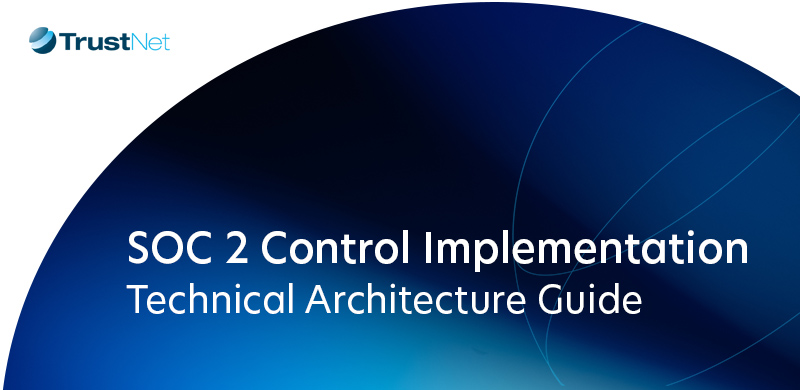Blog PCI Password Requirements
PCI Password Requirements

Among the myriad of standards to enhance data security, the Payment Card Industry Data Security Standard (PCI DSS) stands out as a critical framework for credit card information organizations. This set of regulations, developed to protect cardholder data from theft and unauthorized access, significantly emphasizes password management—a fundamental aspect of cybersecurity.
Passwords are the first line of defense against unauthorized access to sensitive systems and data. As such, the PCI DSS includes specific guidelines to ensure passwords are strong, secure, and capable of thwarting potential breaches.
With the introduction of PCI DSS 4.0, there have been notable updates and enhancements in password security. This article aims to provide an overview of the PCI DSS and delve into the critical role that password requirements play within this framework. Keep reading to learn more.
Key Elements of PCI DSS 4.0 Password Requirements
The Payment Card Industry Data Security Standard (PCI DSS) 4.0 has introduced several critical updates to password requirements. Here, we delve into the key elements:
— Increased Minimum Password Length
PCI DSS 4.0 has introduced a new minimum password length requirement. Passwords must now be at least 12 characters long and include a mix of special characters, uppercase, and lowercase letters. This change acknowledges that longer passwords are significantly harder to crack, thus providing better protection against brute-force attacks.
(For systems that cannot support 12-character passwords, an 8-character minimum is deemed acceptable.)
— Password/Passphrase Change or Dynamic Access Control
Under the new standards, when passwords or passphrases serve as the sole factor for authenticating customer user access, they must be changed at least once every 90 days, or access must be controlled dynamically by evaluating the security posture of the accounts.
(This requirement does not apply to consumer users accessing their payment card information but is crucial for preventing unauthorized access through stale or compromised credentials.)
— Mandatory Multi-Factor Authentication (MFA)
Implementing Multi-Factor Authentication (MFA) is now mandatory for all Cardholder Data Environment (CDE) access. By requiring an additional verification step beyond just the password, MFA significantly reduces the risk of unauthorized access, even if a password is compromised.
— Management of System or Application Accounts
There’s a heightened focus on managing system or application accounts capable of interactive login. Proper management and oversight of these accounts are essential to prevent them from becoming vectors for security breaches.
— Prohibition of Hard-Coding Passwords
PCI DSS 4.0 explicitly prohibits the practice of hard-coding passwords into files or scripts. This measure prevents hackers from quickly discovering and exploiting static credentials, bolstering system security.
— Protection of Application and System Account Passwords
Lastly, the new standard requires that passwords for application and system accounts be safeguarded against misuse. This includes preventing improper access, sharing, or any other actions that could compromise the security of these critical credentials.
These enhancements to the PCI DSS password requirements are designed to provide a more secure framework for protecting sensitive cardholder data.
For more on our PCI DSS 4.0, Click Here
Impact of Weak Authentication
Weak authentication practices, such as simple or default passwords, can lead to unauthorized access to sensitive data and systems. The consequences can range from data breaches and financial losses to reputational damage and legal penalties.
Several vulnerabilities arise from poor password practices, including:
- Use of Default Passwords: Many devices and systems come with default passwords that are easily guessable or widely known. Attackers often exploit these defaults to gain unauthorized access.
- Password Reuse: Using the same password across multiple accounts increases the risk that a breach on one site could lead to compromised access elsewhere.
- Predictable Passwords: Passwords based on easily accessible personal information, such as birthdays or names, can be quickly guessed by attackers using social engineering techniques.
The fallout from weak authentication can be extensive, affecting organizations on multiple levels:
- Data Breaches: The most direct consequence is the unauthorized access to and theft of sensitive data, including personal information, financial records, and intellectual property.
- Financial Losses: Data breaches and system infiltrations can lead to significant economic losses due to fraud, ransom payments, and the costs associated with breach remediation and legal fees.
- Reputational Damage: A breach attributed to weak authentication can severely damage an organization’s reputation, losing customer and partner trust.
- Regulatory Penalties: Organizations failing to adhere to established security standards, such as PCI DSS, may face hefty fines and penalties from regulatory bodies.
By recognizing and addressing common password-related vulnerabilities, entities can significantly reduce risk exposure and strengthen their security posture.
Ensuring Compliance
Here are strategic approaches organizations can adopt to align with PCI DSS requirements effectively:
— Regular Updates and Patch Management
Keeping systems updated is crucial. Regularly install security patches to address vulnerabilities that attackers could exploit.
— Risk Assessment and Management
Conduct periodic risk assessments to identify potential vulnerabilities within the cardholder data environment.
— Access Control Measures
Access to cardholder data should be strictly limited to personnel who require it for their job functions. Encrypt cardholder data during transmission over public networks and when stored, preventing unauthorized access to data in transit and at rest.
— Anti-Malware Measures
Deploy anti-malware software on all systems commonly affected by malware, ensuring regular updates.
— Data Encryption and Masking
Utilize encryption for data transmission and consider masking the Primary Account Number (PAN), ensuring that no more than the first six and last four digits are visible to unauthorized personnel.
— Monitoring and Testing
Consistently test security systems and processes. This includes conducting vulnerability scans and penetration tests to promptly identify and address security weaknesses.
— Incident Response Plan
Develop and maintain an incident response plan. This plan should outline roles, responsibilities, communication strategies, and procedures for containment.
These best practices and security measures in organizational policies and procedures can significantly enhance a business’s compliance with PCI DSS.
Best Practices for Secure Password Management
Here, we delve into recommendations for crafting solid passwords and the importance of bolstering security with multi-factor authentication (MFA) and encryption techniques:
Creating Strong Passwords
- Length and Complexity: Aim for passwords at least 12 characters long, incorporating a mix of uppercase letters, lowercase letters, numbers, and symbols. The greater the complexity and length, the more secure the password.
- Avoid Common Words and Sequences: Steer clear of easily guessable passwords such as “password,” “123456,” or “qwerty.” Hackers use sophisticated tools that can quickly breach accounts protected by weak passwords.
- Use Passphrases: Consider using a passphrase—a sequence of words or a sentence. This can be easier to remember and just as secure if sufficiently long and unique. For example, “BlueCoffeeRain@2024!” is a good passphrase.
- Unique Passwords for Each Account: Never reuse passwords across different accounts. If a hacker gains access to one account, they shouldn’t be able to compromise others with the same credentials.
- Password Managers: Utilize a reputable password manager. These tools can generate strong passwords, store them securely, and fill them in automatically when needed, reducing the burden of remembering complex passwords.
Implementing Multi-factor Authentication and Encryption Techniques
MFA adds an extra layer of security by requiring two or more verification factors to gain access to an account, which could include something you know (a password), something you have (a smartphone), or something you are (biometric verification).
Enabling MFA wherever available significantly decreases the likelihood of unauthorized access, even if a password is compromised.
Encryption Techniques:
- Ensure that any sensitive information stored or transmitted is encrypted. Data encryption converts data into a coded format that can only be accessed or decrypted by users with the correct encryption key.
- Use secure protocols like HTTPS for websites and SSL/TLS for transmitting data to ensure that any data in transit is encrypted.
Implementing these password management best practices and security measures can significantly enhance your online security posture.
Consequences of Non-Compliance
Failing to comply with PCI DSS password requirements can severely affect businesses. Here are the potential consequences of non-compliance:
Financial Penalties
- Substantial Fines: Businesses found non-compliant may face heavy fines ranging from thousands to millions of dollars. The exact amount depends on the severity and duration of the non-compliance and the volume of transactions processed.
- Increased Transaction Fees: Non-compliant businesses may also be subjected to higher transaction fees by payment processors, which can significantly impact profit margins over time.
- Compensation Costs: Besides fines, companies might be required to compensate affected parties, adding to the financial burden of non-compliance.
Increased Risk of Security Breaches
- Vulnerability to Attacks: Non-compliance implies that standard security measures may be lacking, making systems more susceptible to data breaches and cyber-attacks.
- Costly Aftermath of Breaches: The expenses associated with a data breach include legal fees, forensic investigations, and remediation efforts.
Reputational Damage
- Loss of Customer Trust: Customers expect their data to be protected. A breach can severely damage trust, leading to loss of customers and difficulty in acquiring new ones.
- Negative Publicity: Data breaches often result in negative media coverage, further tarnishing a company’s image and potentially leading to a decline in stock value.
Operational Disruptions
- System Downtime: In the wake of a breach, companies may need to halt operations temporarily to secure their systems, leading to lost revenue and productivity.
- Compliance and Recovery Efforts: Meeting compliance standards after a breach requires significant effort and resources, diverting attention from regular business operations.
Ensuring compliance is an ongoing process. By prioritizing data security, businesses can mitigate risks, avoid the costly consequences of non-compliance, and maintain the trust of their customers.
Safeguarding Your Business Through Data Security
In light of the critical importance of data security, organizations of all sizes must prioritize password security. Let this be a call to action for your organization to reassess and reinforce its authentication practices. In doing so, you comply with industry standards and build a resilient foundation that protects your customers, your reputation, and your bottom line.
Remember, in the digital age, your data’s security is synonymous with your business’s security. Make data security a priority today for a safer tomorrow.
Maximize your PCI password security with TrustNet. Talk to an Expert today.




